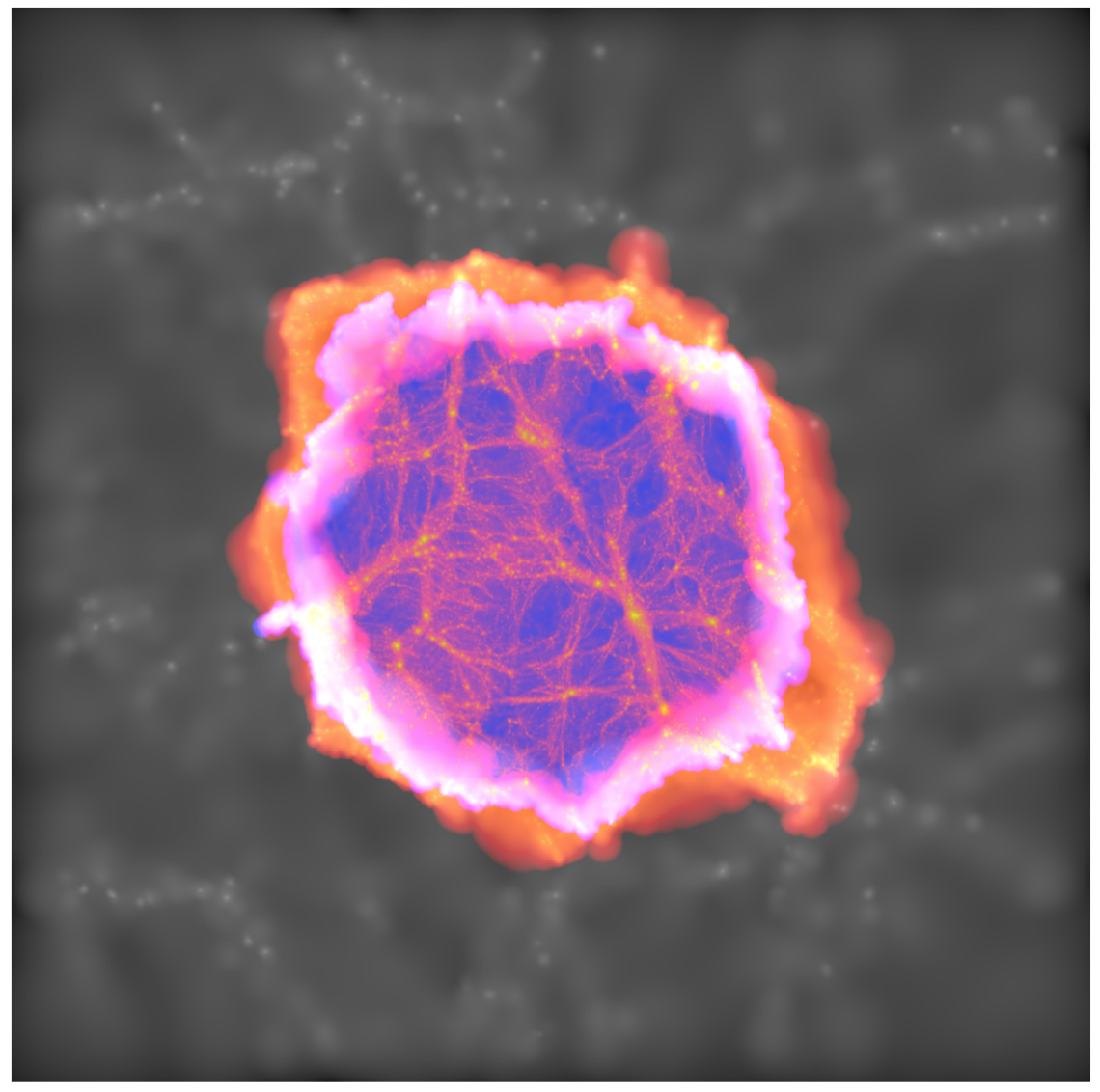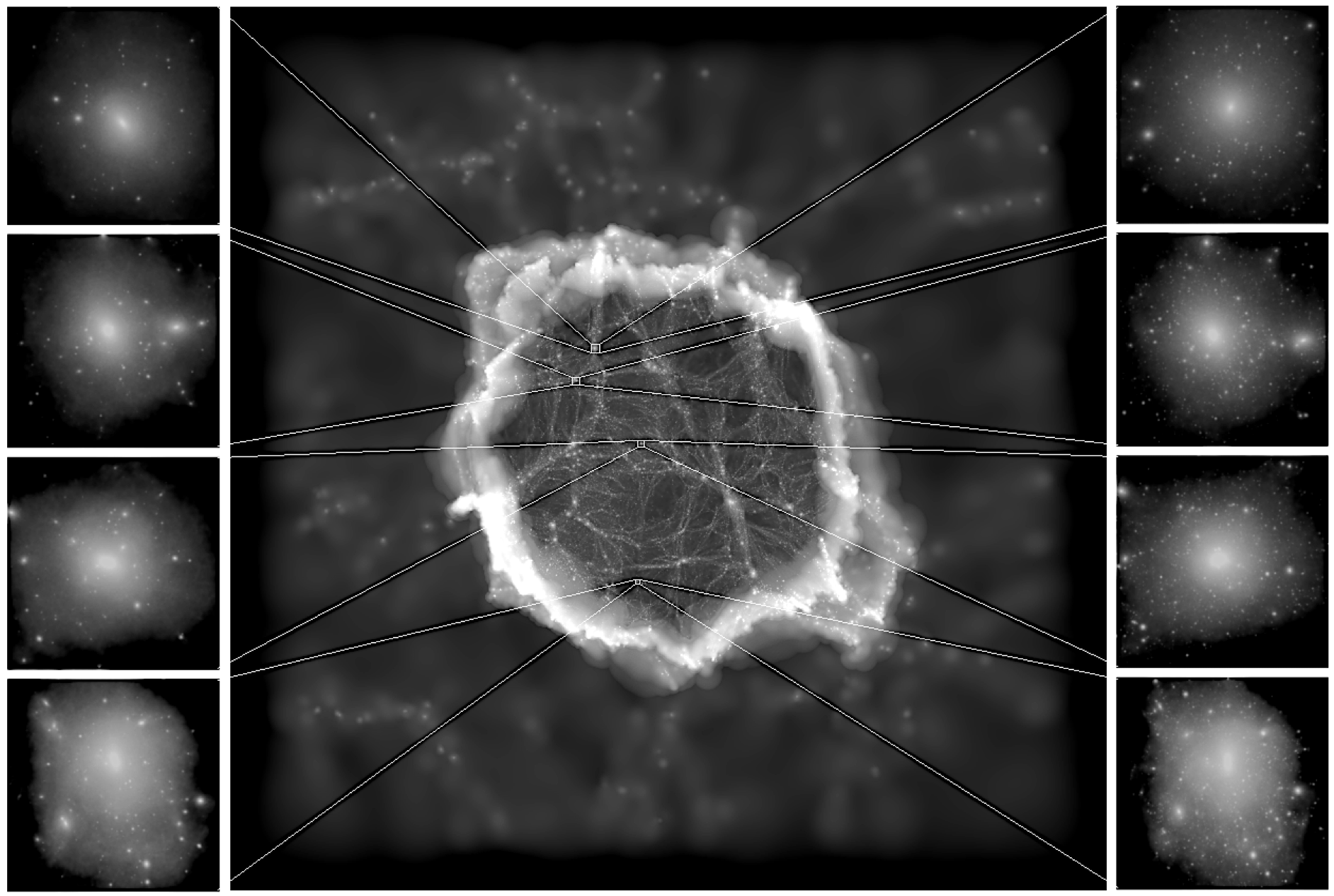
About
The Copernicus Complexio (or COCO) simulations aim to replicate the observed universe with over 13 billion particles in a supercomputer to gain insight into one of the most fundamental questions in science: “Is the Milky Way unique? And if so, why?”.
Cold dark matter (CDM) has long been the standard dark matter candidate, and has done an excellent job in matching real observations of the universe.
However, particle physicists tell us that there could be a different kind of particle, known as a sterile neutrino , which would constitute warm dark matter (WDM), in which the particles move much faster in the early universe.
The two models make different predictions for the nature of structure formation in the universe, with fewer low-mass haloes (the gravitational sinks in which galaxies form) being created in WDM. COCO simulates WDM and CDM cosmologies to test the differences between the two.

References
The initial paper for “The COCO Project” has been published as Hellwing et al. 2015. For more information please visit ICM’s project description page or contact Wojciech Hellwing.